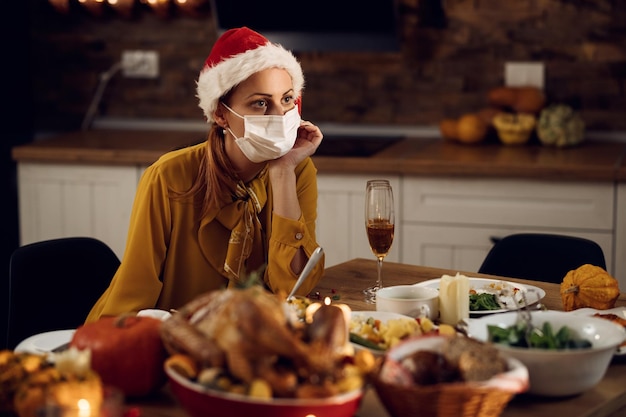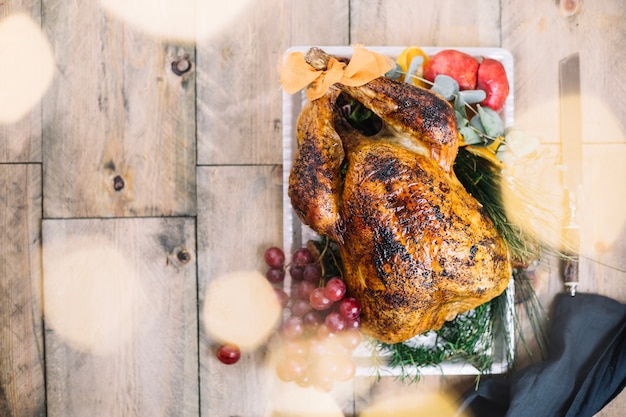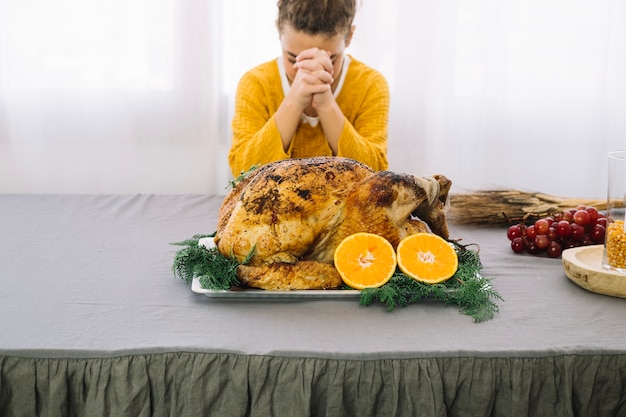Ah, the turkey. A symbol of festive gatherings, family feasts, and delicious meals. But let's face it, cooking a turkey can be a bit nerve-wracking, especially for those who aren't seasoned kitchen warriors. Fear not, my friends! I'm here to guide you through the process, sharing my hard-earned wisdom and a few culinary secrets I've picked up over the years. From choosing the right bird to achieving that perfect golden-brown, juicy masterpiece, we'll conquer the turkey together.
(Part 1) Choosing the Right Turkey: A Bird’s-Eye View

Size Matters: Finding the Right Fit
The first step is deciding on the right size turkey. You don't want to end up with a tiny bird for a large gathering or a giant bird that's going to dominate your oven and your countertop. A good rule of thumb is to aim for one pound of turkey per person. But hey, if you're a big family with hearty appetites, or you just love leftovers (who doesn't?!), you can definitely go a little bigger.
Fresh or Frozen: The Great Debate
Ah, the eternal question: fresh or frozen? I'll be honest, I’m a fan of fresh turkeys. They tend to have a richer flavor, and the aroma wafting from the oven is just heavenly. But frozen turkeys offer a lot of convenience. They last longer, and you can grab one at the last minute if your memory for grocery shopping is a bit, shall we say, 'selective'.
Picking the Perfect Bird: A Checklist
Once you've chosen your preferred state of turkey – fresh or frozen – you need to find a bird that's worthy of your culinary attention. Here's what to look for:
Plump and Firm: A good turkey should have plump, firm breasts and drumsticks. This indicates a bird that's been well-fed and cared for.
White Fat: A layer of white fat under the skin will help to keep the meat moist during cooking and add a lovely flavour.
Avoid the Slimy: Give the turkey a good look-over. If you see any slimy bits or notice a strong, off-putting smell, politely decline the bird and find another one.
(Part 2) Preparing the Turkey: Getting Ready for the Oven

Thawing: Patience is Key
If you’ve chosen a frozen turkey, you've got a bit of thawing time on your hands. The safest and most reliable way is to thaw it in the refrigerator. Allow about 24 hours for every five pounds of turkey. It sounds like a long time, but it's worth it to ensure a safe and evenly thawed bird.
Brining: A Debate Worthy of Dinner
Here we go again, another culinary battleground: brining! Brining means soaking the turkey in a salt solution. People swear by it, claiming it keeps the meat moist and tender, with an incredible flavour. I've tried both brined and unbrined turkeys, and honestly, I haven't noticed a huge difference. But hey, if you're a brining enthusiast, go for it!
Seasoning: A Symphony of Flavor
This is where you can unleash your creativity and add your own personal touch. My go-to seasoning is a simple blend of salt, pepper, and herbs like rosemary and thyme. But get adventurous! Experiment with different spices, rubs, and even citrus zest. Just remember, less is more when it comes to seasoning. You want to enhance the natural flavours of the turkey, not overwhelm them.
Stuffing: A Delicious Debate
Stuffing can be a delightful addition to your turkey, but it's also where things can get a little dicey in terms of food safety. If you choose to stuff your turkey, make sure the stuffing is cooked to a safe temperature of 165°F (74°C). For extra peace of mind, you can stuff the bird loosely and cook the stuffing separately in a casserole dish.
(Part 3) Cooking the Turkey: Oven Techniques for a Perfect Bird

Preheating: The Foundation of Good Cooking
Before you even think about putting the turkey in the oven, preheat it to the correct temperature. This ensures even cooking and helps the turkey brown beautifully. For a whole turkey, I typically preheat my oven to 325°F (163°C).
Roasting: A Dance with Heat and Time
Now, we’re ready to roast! Place the turkey in a roasting pan. I like to use a roasting rack to lift the turkey slightly off the bottom of the pan, allowing air to circulate around it for even cooking.
Basting: A Touch of Moisture
Basting is a key step in achieving a juicy, flavorful turkey. Throughout the cooking process, use a spoon or baster to pour the turkey's own juices or melted butter over the bird. This helps to keep the meat moist and prevent it from drying out.
Checking for Doneness: The Role of the Thermometer
Forget those old wives' tales about poking the turkey and checking if the juices run clear. You need a trusty meat thermometer. Insert it into the thickest part of the thigh, making sure it doesn't touch any bone. The turkey is fully cooked when the internal temperature reaches 165°F (74°C).
(Part 4) Resting the Turkey: A Moment of Relaxation
Let It Rest: The Secret to Juicy Meat
Once you’ve achieved that perfect internal temperature, don’t be tempted to carve the turkey right away. Give it a good 15-minute rest, covered with foil. This allows the juices to redistribute throughout the meat, resulting in a more tender and flavorful turkey.
Carving: A Skill Worth Mastering
Now, the exciting part: carving! Use a sharp carving knife and be careful – no one wants a turkey-related injury. Start by removing the legs and thighs, then carve the breast meat into slices.
(Part 5) Turkey Cooking Temperature: A Detailed Guide
Temperature Guide: A Handy Reference
Here's a table summarizing the recommended cooking temperatures for different parts of the turkey:
| Part | Temperature (°F) | Temperature (°C) |
|---|---|---|
| Breast | 165 | 74 |
| Thigh | 165 | 74 |
| Stuffing | 165 | 74 |
| Wings | 165 | 74 |
Doneness Tips: Beyond the Thermometer
Internal Temperature: The turkey should be cooked to an internal temperature of 165°F (74°C).
Clear Juices: The juices should run clear when the turkey is pierced.
Golden Brown and Crispy: The skin should be golden brown and crispy.
(Part 6) Turkey cooking times: A Rough Estimate
Time Estimates: A Starting Point
Here's a rough guide to turkey cooking times, but always remember to use a meat thermometer to confirm doneness:
| turkey weight | Cooking Time |
|---|---|
| 8-12 pounds | 3-4 hours |
| 12-16 pounds | 4-5 hours |
| 16-20 pounds | 5-6 hours |
Factors Affecting Cooking Time: A Few Variables
Turkey size: Larger turkeys take longer to cook.
Oven temperature: A lower oven temperature will result in a longer cooking time.
Stuffing: stuffed turkeys take longer to cook.
(Part 7) Turkey Troubleshooting: Dealing with Cooking Challenges
Dry Turkey: Saving a Dehydrated Bird
If your turkey is dry, it’s likely because it wasn’t cooked properly. To prevent dryness, make sure to baste the turkey regularly and cook it at a lower temperature. You can also try brining the turkey before cooking.
Undercooked Turkey: Back to the Oven
If your turkey is undercooked, you’ll need to cook it for longer. Use a meat thermometer to check the internal temperature, and return the turkey to the oven until it reaches 165°F (74°C).
Overcooked Turkey: A Salvage Mission
If your turkey is overcooked, it will be dry and tough. Unfortunately, there's not much you can do to salvage an overcooked turkey. But hey, you can try adding some gravy or sauce to help moisten it, and perhaps turn it into a delicious turkey salad.
(Part 8) Serving the Turkey: A Feast for the Eyes and Palate
Presentation: Making Your Turkey Shine
Once the turkey is carved, you can present it on a platter with some of its own juices and gravy. Garnish with herbs, lemon slices, or cranberries for a festive touch.
side dishes: Completing the Culinary Ensemble
No turkey dinner is complete without some delicious side dishes. Some classic options include mashed potatoes, gravy, stuffing, cranberry sauce, and green beans.
Leftovers: A Culinary Treasure Trove
Leftover turkey is a culinary gift. Use it to make a variety of dishes, such as sandwiches, salads, and soups.
(Part 9) FAQs: Your Turkey Questions Answered
What is the best way to store leftover turkey?
Store leftover turkey in an airtight container in the refrigerator for up to 3-4 days.
Can I freeze leftover turkey?
Yes, you can freeze leftover turkey for up to 2-3 months. Thaw it in the refrigerator before using.
What is the best way to reheat leftover turkey?
You can reheat leftover turkey in the oven, microwave, or on the stovetop.
How do I know if my turkey is cooked?
The turkey is cooked when the internal temperature reaches 165°F (74°C) in the thickest part of the thigh, using a meat thermometer.
What should I do if my turkey is undercooked?
If your turkey is undercooked, return it to the oven and cook it for longer until it reaches the desired internal temperature.
Everyone is watching

How to Cook Frozen Lobster Tails Perfectly: A Step-by-Step Guide
RecipesLobster. Just the word conjures up images of lavish meals, special occasions, and a taste of luxury. But let's...

Pigs in a Blanket Cooking Time: How Long to Bake for Perfect Results
RecipesAh, pigs in a blanket. Just the name conjures up images of those delightful little parcels of crispy pastry en...

Pork Fillet Cooking Time: How Long to Cook It Perfectly
RecipesPork fillet, or tenderloin as it's sometimes called, is a real favourite in our house. It's so versatile, and...

The Ultimate Guide to Cooking Delicious Frankfurters
RecipesLet's face it, we all love a good frankfurter. It's a classic, simple, and always satisfying. But let's be rea...

Wolf Meat Recipes: A Guide to Cooking Wild Game
RecipesLet's be honest, you don't see wolf meat at your local butcher shop every day. It's a bit of a wild card, but ...
